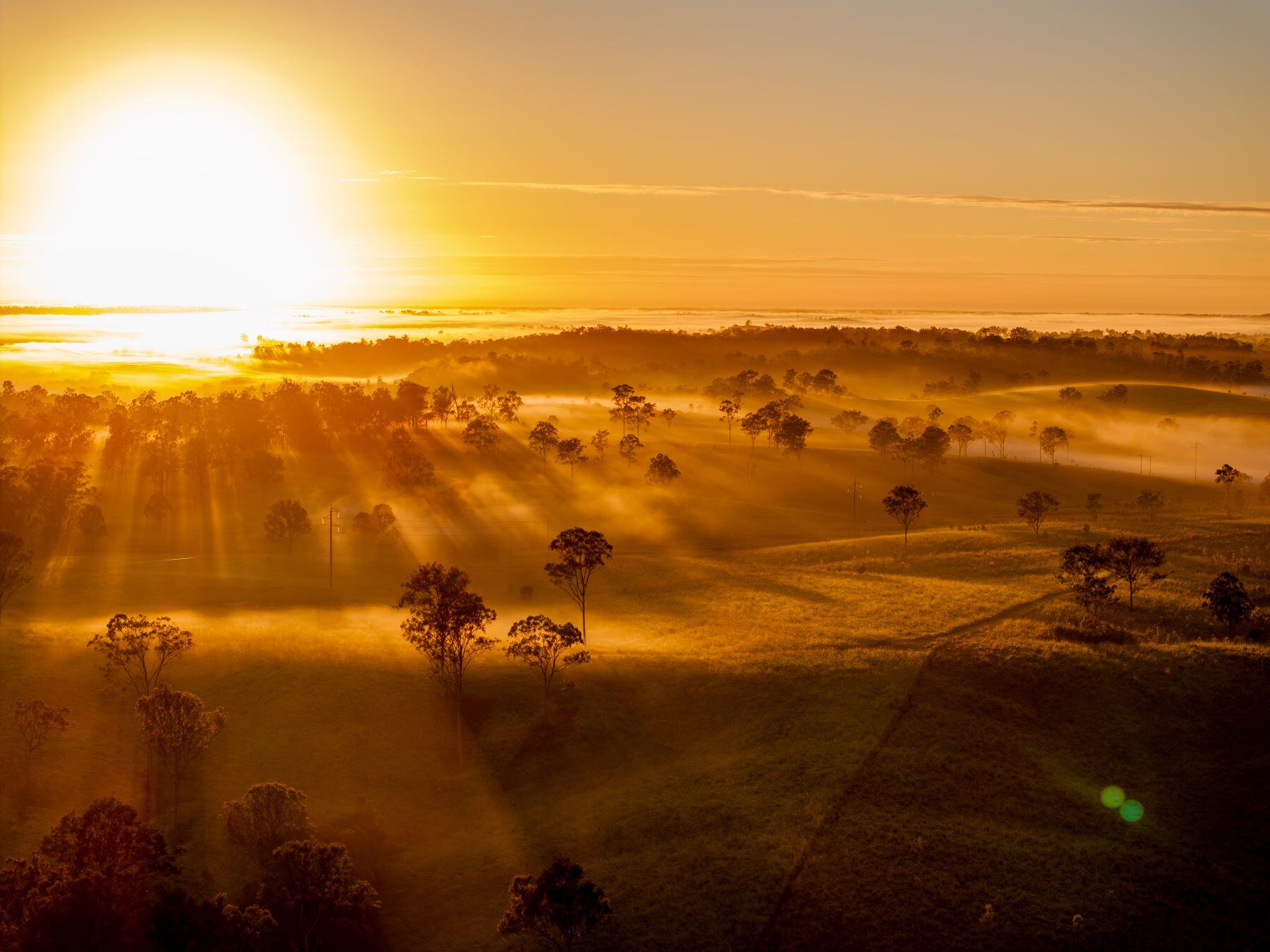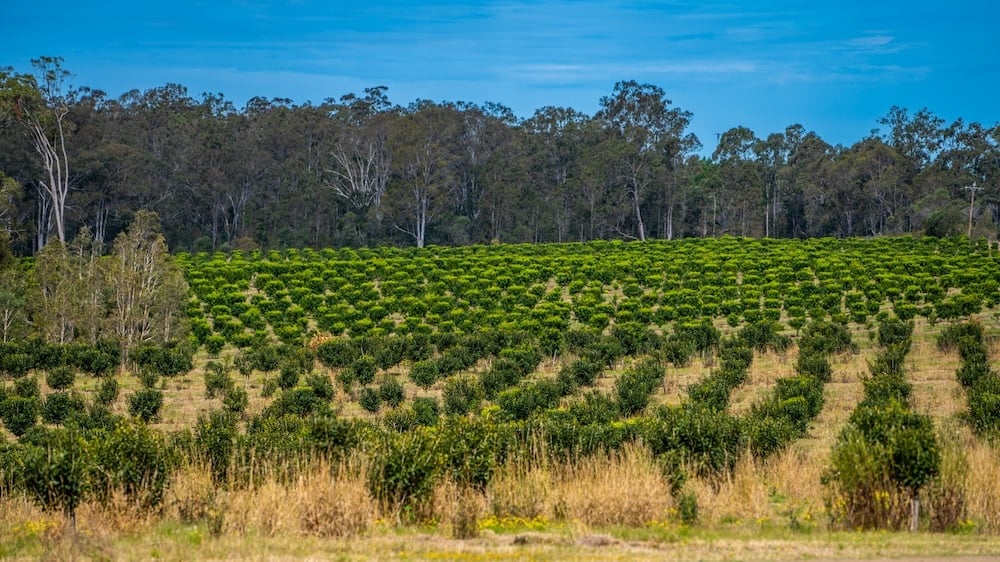Inside this year’s biggest farm sales
Australia’s biggest farm sales of 2025, as reported on by AuctionsPlus, delivered another year of blockbuster rural transactions, led by the roughly...
4 min read
 Kylie Dulhunty
:
Oct 8, 2024
Kylie Dulhunty
:
Oct 8, 2024

The rural property market has largely recovered from its start-of-year standoff, with industry experts reporting an increase in listings and sentiment, while predicting a further snowball effect leading up to Christmas.
LAWD Senior Director, Danny Thomas, said at the start of 2024 the rural property market had hit a stalemate, with market confidence, and listings, well below normal.
People were sitting on their hands, waiting to see what happened in terms of red meat prices and whether or not that El Nino the BOM predicted happened,” he said.
While weather conditions were far from as severe as predicted, farmers still acted quickly to divest cattle, including some at very low prices.
“People were carrying a lot of inventory because they had good seasons, but that price correction really cruelled confidence,” Mr Thomas said.
“And the dry predictions also cruelled confidence amongst the croppers.
“So there just weren’t many deals being done and there was sort of a Mexican standoff between vendors and purchasers.”
But Mr Thomas said the drop in confidence and property turnover hadn’t flowed onto land prices, which largely remained steady on a national level.
“What we’re seeing now, in the second half of the year, is that things are really kicking off hard again and there’s a lot of interest (in properties),” he said.
“The banks are open to business again and there’s some real activity being driven, with a lot of people wanting to sell and buy before Christmas.”
READ THIS WEEK'S PROPERTY ROUND-UP: Gunn Agri Partners and Go.Farm make rural real estate moves
Mr Thomas said properties in Northern NSW and South East Queensland were selling well, on the back of a series of strong seasons.
“Anything cotton is very strong,” he said.
“In Southern Queensland and Northern NSW, those guys are probably on their fifth or sixth year in a row of very good prices, there’s lots of water about, and good confidence.
“Some of the cotton guys also, as a natural hedge, are looking to go out and do dry land cropping or beef cattle.
“They’re using their balance sheets to continue to grow their businesses, which is really sensible.”
Colliers National Director of Agribusiness, Valuation and Advisory Services, Stephen Cameron, said a good downpour of rain in November last year kicked the Queensland market back into gear and, since then, property prices had firmed about 10%.
He said helping to underpin values were low transaction volumes.
“Sale rates for 2024 through a lot of the local government authority areas throughout Queensland are down at this time of year, anywhere from 40 to 60% on 2023 sales,” Mr Cameron said.
“There was a bit of a buyer's frenzy and a fear of missing out.”
Mr Thomas said the sheep and wheat belt along the Newell Highway in NSW was also strong.
“One of the other trends that we are seeing is that the institutional end of the market, above $50 million, is very strong and strengthening,” he said.
“I think that exchange (rate) sub 70c is still positively influencing external money to come into the country.
“Above the $50 million bracket we can sell everything two or three times, but when you get below that, into the bigger family corporations, and certainly below $20 million, where you’re in mum and dad territory, that’s been the tougher end of the market in the first half of the year.
“But it’s also the part where we’re seeing a lot of uptick in activity now.”
Raine & Horne Regional and Rural Network Manager, Travis Wentriro, said record-breaking beef exports could also bode well for rural property prices.
Rural Bank’s Commodity Overview Insights for August showed record-breaking beef exports to the US, Japan and South Korea.
National exports totalled 129,998 tonnes in August, which was the highest monthly volume on record, including a 34% month-on-month rise to 38,500 tonnes to the US.
“Ongoing export demand, especially from the US, coupled with stable slaughter rates, suggests a positive long-term outlook for cattle farming,” Mr Wentriro said.
“This could result in sustained or gradually increasing rural property values as the profitability of cattle farming remains strong.”
Mr Thomas said the “drier pockets” of the market in South West Victoria, South East South Australia and parts of Tasmania and WA weren’t fairing quite as well.
He tipped much of the rural property market would “track sideways”, at established values, moving towards the end of the year and into 2025, but a few patches could slide backwards.
“The pockets of the market that will go backwards will be those ones that have been in that dry period that were probably overshot during the halcyon days of 2022 and 2023, which will be Western Victoria, pockets of South East SA, Tassie and maybe the southern part of WA,” Mr Thomas said.
Mr Cameron said with more properties now coming to the Queensland market, there would be greater choice for buyers and he expected prices to level off.
He said since the Clean Energy Regulator ended the Human-Induced Regeneration scheme in September last year, carbon aggregators' interest in property had also significantly waned.
“Those aggregators are no longer floating around in the marketplace looking to acquire holdings to register carbon abatement projects until such time as the Clean Energy Regulator signs off on the new methodology, which has been estimated to be, potentially, sometime next year,” Mr Cameron said.
“So what that’s effectively done is take out a certain market segment that has been highly active.”
All of the experts agreed that with more listings coming to market, property prices were likely to plateau towards the end of the year and into 2025.
But Elders General Manager Farmland Agency and Investments, Mark Barber, said good properties, presented well, would continue to sell.
“Moving through spring, I think we’ll see volumes of properties pick up,” he said.
“I still think it will be a conservative market in the south, but I think the north is still looking pretty good.
“I think that the lesson for the market at the moment is, if it's a good quality property presented well, and it's in a sought after location, or between two neighbours, we're still seeing a lot of strength and those properties still sell very well.”
Mr Barber said the recent frost that hit Central and Southern NSW, in particular, could also impact property prices, with damage tipped to hit yields hard in many instances.
READ MORE: Season update: Harvest kicks off in Queensland, grain pain in the south continues
“I’ve been driving up to Molong and out to Forbes and back to Yass and you just see across the paddocks, beautiful crops that you could walk over and beautiful crops that just have that brown tinges through the heads,” he said.
Mr Cameron said in Queensland, he expected top-quality properties to continue to sell well, but said B-Grade properties may find the landscape tougher.
“There might be a distortion between those secondary quality properties where there might have to be a slight readjustment of market expectations to achieve a sale,” he said.
He also warned time on market may push out from three to four months to six months and up.
“The vendors looking to sell in shorter periods may need to adjust their expectations or values to reflect the market conditions,” he said.
A journalist with more than 20 years experience covering everything from court to health, it wasn't until Kylie Dulhunty took a job she didn't want - as a real estate reporter - that she truly found her passion. Today, Kylie loves nothing more than turning market trends, industry insights and epic property sales - residential, rural and commercial - into stories that captivate and inform.
Posts By Tag
.png)
Australia’s biggest farm sales of 2025, as reported on by AuctionsPlus, delivered another year of blockbuster rural transactions, led by the roughly...

Each week, we take the pulse of rural property - from sales data to who’s making headlines. Check out this week's report from Kylie Dulhunty.

Each week, we take the pulse of rural property - from sales data to who’s making headlines. Check out this week's report from Kylie Dulhunty.